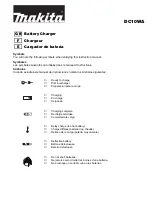
43
Cell Balancing
Reasons for Cell Balancing
A123 recommends cell balancing circuitry when more than one cell is put in series in a battery pack. This is
important to achieve maximum life, reliability and safety. Over time and use, the spread between the highest and
lowest cells’ state of charge (SOC) widens. SOC spreads large enough result in the string delivering a noticeably
smaller percentage of its energy content during full discharge cycles. This is because some of the cells are not
being fully charged during recharge and the other cells are not being fully discharged during pack discharge. The
effective
capacity of the pack is reduced proportionally by the difference between the minimum and maximum
SOC of the cells in that pack. If the string is balanced, every cell can be charged to its maximum SOC during
recharge, and every cell can be brought to its minimum allowable SOC during discharge. In this case every cell
delivers its full energy to the load.
Each cell in every battery string will have different rates of self-discharge with respect to each other. Cell SOC
divergence due to variations in cell construction, environment and aging requires some means of balancing. Three
factors can cause series elements to diverge from each other over time:
•
Construction Variations
in the cell manufacturing process and operational conditions. Tolerances in the
electrode material loading, active material make-up, and other factors can lead to how fast each cell will lose
charge over time.
•
Environment Variations
in cell temperature across the series string can lead to different rates of self-discharge
between each of the series elements.
•
Aging Variations
in cell performance can grow over time as each of the cells ages differently in response to its
environment and physical construction.
Whether or not the BMS includes cell balancing in the pack management, the BMS must
at least monitor the voltages of each of the series cells to stop the charge when any one
of them gets to the upper safe limit, as well as to stop discharging when any one of
them gets to the lower voltage limit.
When to Balance Cells
There are practical limitations to any BMS design that govern when balancing occurs. First, there are power
limitations. The cells diverge at a very low rate, so it may not make sense to have a balancing circuit that shuttle a
large amount of charge in a small period of time. The cost, size and efficiency considerations usually lead to a
balancing circuit that slowly drains some of the cells to compensate for the slow divergence that can be expected
in a collection of A123 cells. Whatever the balancing rate, the BMS must make sure that it can balance the cells as
often as it is necessary in order to not get too far behind the cell’s inherent divergence. For example, if the cells
diverge at a hypothetical rate of 1% per month between each other, and the balancing current can shuttle 1% of
the cell’s SOC in one hour, the BMS needs to operate its balancers for at least 0.14 % of the time.
A second governing factor is the limitation of accuracy of cell voltage sensing, especially on the flat part of the
Open Circuit Voltage (OCV) vs. State of Charge curve. If the SOC is not accurate, the balancing operation may itself
cause the cells to diverge. Depending on the application, some compromises can be made. For example, if the
pack is intended for applications where the pack is fully recharged after each discharge, accurate cell balancing can
be achieved when the pack is nearly-fully charged. When the pack is nearly full of charge, the State of Charge (SOC)
















































